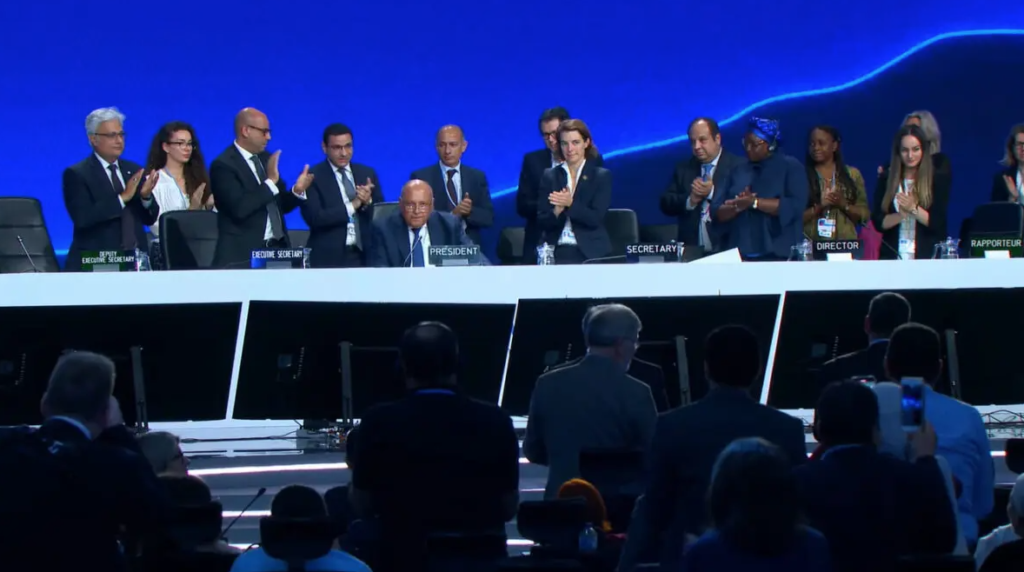The negotiations of the COP27 Sharm have lasted almost 40 hours beyond the term of Friday 18 November
(sustainabilityenvironment.com) – Imagine an apartment building where all the apartments are damaged by water seepage because the roof is broken in several places. The damage is mostly sustained by the lower floors because there is more water and tenants have less chance to intervene. To break the roof was the neglect of all, but especially of those who live upstairs. Imagine that an apartment building meeting, convened to solve the problem, decides that the tenants of the upper floors pay a part of the damage to the lower floors. But nothing else: nothing is done to repair the roof and the assembly is taken away. Is this madness? That’s what just happened at COP27 Sharm el-Sheikh.
The climate summit closes with an agreement – the Sharm el-Sheikh Implementation Plan – which has only one acute: the loss and damage fund is finally a reality. But it sticks on most of the other major dossiers. Zero ambition more than the COP26 in Glasgow. We don’t talk about saying enough about fossils. There are words, there are no actions needed. The gap between where we are and where we should be remains huge and this climate summit does practically nothing to reduce it. Thus, while it is decided that it is right – and it is right – for rich countries to pay damages, no action is taken on the cause of the damage.
It was a very poor result for the COP27 in Sharm, which had a clear objective: to give substance to the decisions taken a year ago in Scotland. That’s why it was immediately called “the implementation COP”, the implementation COP. What did it get? Reiterate the promises of COP26, however, hardly. And little else. “It is more than anything the COP of repetition“, many thought these days.
The glass is half full…
COP27 Sharm will be remembered for creating a fund for loss and damages. With this expression (in English loss & damage), the COP process indicates the aid to the countries most affected by the climate crisis, which should be guaranteed by the richest countries. It was the most important item on the agenda at the climate summit in Egypt. And it was also the most complicated to deal with. In Sharm there was a very tense tug of war between developed and developing countries. Unlike all previous times, the latter won.
It is a victory because, first of all, COP27 immediately establishes a fund, without postponing it to the next summits. And the fund will be operational next year at COP28 to be held in the United Arab Emirates, instead of also postponing this practice to the Greek calends. The rich countries – which in recent months have even tried to prevent this issue from ending up on the agenda – wanted to postpone any decision to 2024. They proposed a path, sometimes vague, for the next two years. The least developed countries have been calling for losses and damage for 30 years and have sent the proposal back.
Until Friday evening, officially on the last day of COP27, it seemed that loss & damage were once again destined to remain a dead letter. Europe has broken the deadlock. Which accepted many requests from the other party, proposing a new text that was difficult to say no to. In return, it called for three things: a better agreement on the mitigation chapter, to designate of “particularly vulnerable countries” as priority recipients of aid, and To review the donor pool. She got the second and she settled.
The idea was to avoid that even countries with a high GDP per capita (thanks, among other things, to fossils), such as those of the Gulf – formally still referred to as developing -, could access aid before others, more titled. “Particularly vulnerable” means affected by the impact of climate change, but also without means to mitigate, adapt, or give quick responses after an extreme event. It is different from the concept of countries simply “exposed” or “affected” by the climate crisis.

